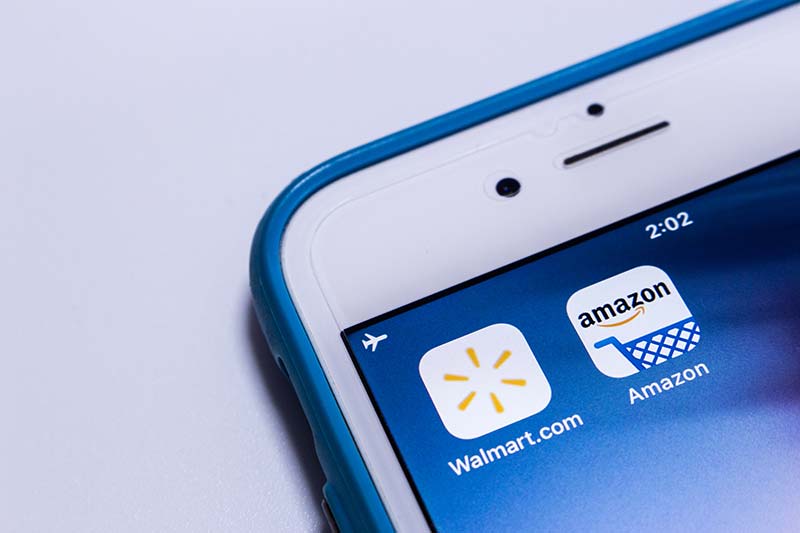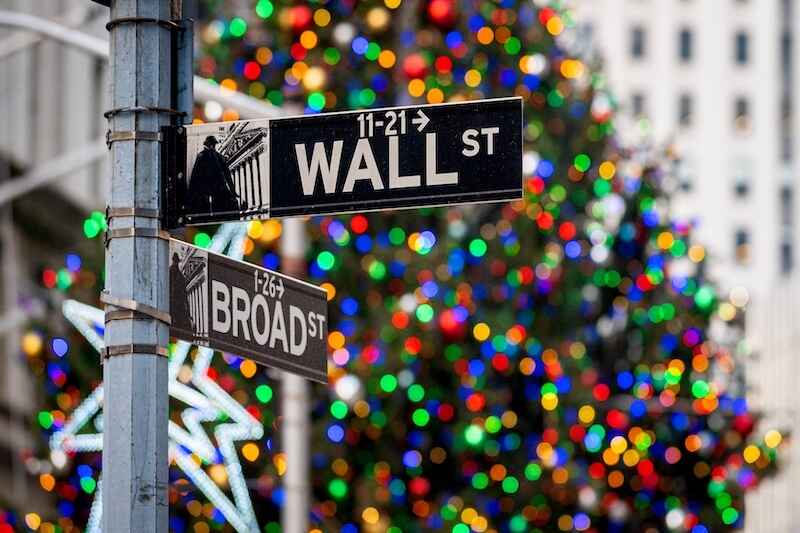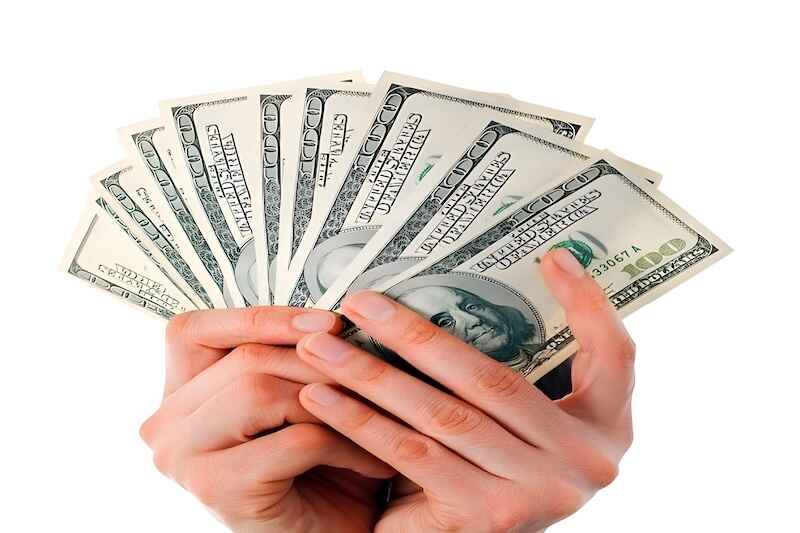Buy This, Not That: Are These 5 Grocery Stocks Worth Adding to Your Cart?
Shah Gilani|March 27, 2024

Readers have been asking us to look at grocery chains.
They say inflation has pushed consumer goods higher. Obviously grocery stores are caught right in the middle.
So, the question is… how are these businesses doing right now? What do the margins look like? And are there still opportunities in the space?
These are all good questions. Which makes this a perfect topic for our latest edition of Buy This, Not That.
In today’s video, I look at five grocery chains – including one of the most well-known stocks on the planet – and determine if any are a “Buy” right now.
If you’ve been thinking about adding any of these companies to your portfolio, you’re going to want to watch this first.
Click on the image below to watch it.
TRANSCRIPT
Hey there, everybody, Shah Gilani with your weekly BTNT, as in Buy This, Not That.
This week, I’m going to hit some grocery store chains because a lot of people have been asking me about the grocery business – the margins, the extensive nature of the business in the United States. It’s huge. As it should be.
Groceries, of course, are huge globally. There are some pretty fancy names in the business, some pretty big names – and some small names. So, let’s take a look at them. First, the biggest of the bigs. Can you guess it?
You’re right. Walmart (WMT).
Yes, I know Walmart is more than groceries, but it’s also the biggest grocery store in the country. The biggest grocery business in not just the country, in the world. And you know what? It’s a “Buy” because it’s Walmart.
How big is Walmart? We’re talking about a $488 billion market cap stock. Yeah. They’re giant.
Revenue, $648 billion and growing. Okay. So profit margin in Walmart, which includes the grocery side of things, is a combined 2.39%.
Now, the grocery side on its own is less. The margins on groceries are generally one and a half to maybe two and a quarter. That’s kind of the range that get a little higher. Sometimes a little lower. But because Walmart sells everything else, their margins are higher than what you normally see on just the grocery side.
But I love the fact that we’re talking about $611 billion, $625 billion dollar turnover in groceries. That’s overall, but a huge portion of that is groceries. Now, it’s trading around, Walmart is trading around sixty bucks. It’s high… but it’s Walmart.
Me personally, I wouldn’t buy it here. If I own it, I’d be a happy camper. But would I buy it here? Would I chase it up here after it’s had a really nice run for all the right reasons? Probably not. Because there are other stocks, like tech stocks, that I’d rather go into that are working as well if not a lot better than Walmart. But if Walmart comes down, I’m gonna look at it.
It’s a great company. It’s a great stock if you own it. Don’t sell it. Maybe just make sure you have some stocks here if something happens to the market.
But Walmart is a “Buy” and is probably always gonna be a “Buy.” Definitely gonna be “Buy on dip,” period.
Next up: Kroger (KR).
Okay. Everybody knows Kroger. You’ve probably shopped at Kroger, or if you’re in California, you know there’s also Fred Meyer.
Kroger stock is right around fifty six bucks. How was there a parabolic breakout to the upside for a grocery store company?
Earnings came out.
So the stock went from forty nine to fifty six. And that’s a pretty big sixteen percent move in a very short time. So look at the Kroger graph. This thing looks like some kind of meme stock all of a sudden!
I know sixteen percent isn’t a huge game, but if you look at the graph, you’re like color medium pressed. And it is oppressive. But I think it’s had a pretty good run. And I don’t know how much more it’s got in it.
When I chase Kroger here? No. It’s not a “Buy” for me. Not when it moves up like that.
Take a look at a one year chart. You just look at the right hand side of that chart. You’re like, whoa, what happened? Yeah.
How about good earnings, better than expected earnings? How about possibility of a merger? About stuff that’s gonna cause that kind of action in the grocery store, which emerged by the way isn’t going to happen. So guess what?
It’s likely to come down. I don’t think that grocery store chain mergers are going to be allowed by the FTC.
It’s just not gonna happen. Not under the Biden administration. So any stock, any company in the grocery sector that someone says, “That’s a takeover.” It’s not gonna happen.
The idea of consolidating grocery stores in an inflationary environment, when their food prices have had their greatest impact? Good luck with that. We’re not in that kind of a place.
So Kroger had its run. It’s not about If you look at it before there’s speculation in it. You wouldn’t touch the stock. So Kroger, sorry to say. Not.
Next up is another giant, Costco (COST).
Costco is huge in the grocery business. And you know Costco, obviously, it’s a membership based, subscription type company where you go in, show them your card, and you’ve got access to everything. So it’s not just grocery, but the grocery stores I think they’re great. I love shopping there. They offer fabulous products. Great. I’ll just say some of the best meats. And poultry and vegetables out there at great prices.
So membership based eight hundred thirty eight stores worldwide, five hundred and seventy eight in the United States, trading at seven hundred thirty one dollars. That’s high, but we got fractional shares so you can buy However, much capital you want to apply. I don’t care if it’s a hundred dollars or five hundred dollars or five thousand.
You can get into Costco, even at seven hundred thirty one dollars a share. Now, I don’t know where it’s going to go.
All I do know is Costco is high, and it’s high for a reason. The stop is done well. Company’s done well, but I’m not in love with it. I do like to overall profit margin. It’s up there with Walmart. Walmart’s like two thirty nine and Costco is a good bit higher at two seventy three, which is a good bit higher considering there in similar businesses.
But Costco was kinda had a nice one and kinda flattened out here. Would I buy it here? No. Would I buy it on dips? Yes.
If you don’t own it, I wouldn’t chase it. If you and you’re happy camper. I would sell that, just make sure it had like a ten percent trailing stop underneath it because at this price, ten percent. I I wouldn’t wanna skim up twenty percent.
Which a lot of people like twenty percent trailing stops, I would put ten percent on this puppy. So that’s what I think of Costco. Again, quarterly revenue growth is is five point seven percent in the trailing twelve months quarterly earnings growth in trailing twelve months, nineteen percent. So you know, Costco’s got higher to go, but keeps up this run.
But but I buy it up here. None might rather go in and buy more Microsoft, for example. So love Costco, but I’m not gonna chase it.
Next up, Albertsons (ACI). You know the name.
Now, Albertsons. Just just don’t look at the chart if you have a full stomach people. The symbol is ACI. So if you listen to this and you’re pulling up a chart, just make sure you haven’t eaten a lot.
If you look at a two year chart, this thing just fell off a cliff. K? That’s enough to give you aja. If you look at a one year chart, it’s a roller coaster.
You know, I don’t chase stocks like this, and I don’t think you should either. It’s the stock chart alone tells you a very interesting story. Now is it basing down here? I hope so.
I hope it’s facing down here at twenty one dollars and change because it might be worth a pop. It might be worth a decent pop, but until the numbers turn around till it’s better, I’m not gonna chase it.
It’s just give me some ideas. Cash position two hundred forty two million dollars debt fourteen point seven billion. I don’t love that. The thing that really bothers me is it’s got negative levered, free, cash flow.
Negative. Never good.
Negative two point seven nine billion dollars over the trailing twelve months. They got no money to invest in upgrades and other things. They’re just not there. So I don’t I don’t like that.
Dividend is a paltry two point two eight percent. What would you buy Albertsons ACI for that kind of dividend? I wouldn’t. You look at the stock chart, If you wanna take an outsized gamble on it, then get maybe buy some, I would say, leap call spread, something like that because if it’s basing down here, it can go higher.
But for me, it’d be like watching paint dry. So Albersons ACI. Sorry. Not.
And last but not least, we’re going smaller. There’s a little company centered out of Pennsylvania…
It is Weis Markets (WMK).
Now, I got asked about this. It’s only a $1.7 billion market cap company.
Balance sheet looks great, by the way. They have grocery stores in, of course, Pennsylvania and Maryland. They have New Jersey, New York, and, where else… Delaware. So, yeah, they’re in that vicinity around Pennsylvania. They do well, but I’m just not a big fan. Decent profit margin for grocery store. Two point two one percent.
So I like it. It it’s the balance sheet is good. It’s four hundred and ten million dollars in cash, a hundred and eighty three million in debt. Member free cash flow is good. Operating cash flow is really good.
But the revenue growth is negative. And the earnings growth is negative. So even at sixty three dollars, if you think it’s looking good, you wanna take a shot with it, maybe you know that you like the company, WMK. It’s not.
It’s definitely not. I hate to see negative earnings growth and negative revenue growth, that means they’re not growing the revenues. They’re going the wrong way. So why bother?
Stock is ugly. You know, if you look at it, you think, well, maybe it’s consolidating, you know, kinda like Albertsons, you might say he’s a worth a shot. It’s worth a shot if you’re speculative and you wanna throw some money at it, but it’s not my cup of tea. Certainly not even to speculate on because I got better places to put my money, and you do too.
So, guys, not. That’s it. For this week, I’ll catch you guys next week. Cheers.

Shah Gilani
Shah Gilani is the Chief Investment Strategist of Manward Press. Shah is a sought-after market commentator… a former hedge fund manager… and a veteran of the Chicago Board of Options Exchange. He ran the futures and options division at the largest retail bank in Britain… and called the implosion of U.S. financial markets (AND the mega bull run that followed). Now at the helm of Manward, Shah is focused tightly on one goal: To do his part to make subscribers wealthier, happier and more free.



